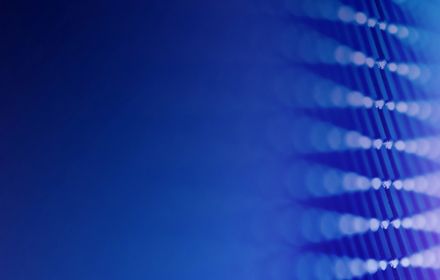The biggest supply chain risk? Doing nothing.
If there is one certainty about supply chains and sourcing functions across all sectors, it is that they will be disrupted. This may be through logistical, geopolitical, environmental, or new, unforeseen challenges and means supply chain leaders must embrace new capabilities to be agile and resilient, efficient, and cost effective. Supply chain leaders must also stand up to increasingly intense Environmental, Social and Governance (ESG) scrutiny from regulators and stakeholders.
Our 2023 Future of supply chain report explores how Australian businesses can tackle these issues head-on. We look at the immediate future of supply chains, and provide a view of how to embrace what’s on the horizon. We also share how different industries can be strategic in using advanced technology to improve efficiencies, remain compliant and manage their workforce.
Addressing current supply chain challenges
ESG initiatives
Between stakeholder demands and regulatory mandates, addressing ESG impacts is now a necessity. Leaders can view this as an opportunity to create value, and make ESG a key consideration within the supply chain planning and decision-making process, which should now need to include:
- responsible sourcing
- due diligence
- decarbonisation
- circular economy
- human rights in manufacturing and production
- technology enabled ESG reporting.
Advanced robotics and automation
The supply chain is already becoming increasingly automated, with investment in these technologies set to keep growing over the next two years as its value (such as big data analysis, repetitive task performance, and machine learning) becomes more evident. Technology will also evolve, depending on the sector – automotive and consumer and retail are both leading the way in this space, but the following sectors are close behind:
- Food and beverage (e.g. automation to replace manual tasks within dangerous areas or difficult working conditions)
- Healthcare (e.g. using bots to accurately update records)
- Manufacturing, (e.g. 24/7 inventory tracking)
- Public sector (e.g. chatbots handling complex process tasks)
Supply chain workforce
Creating a future-fit supply chain workforce means having a digital mindset today. The benefits include accelerated business growth, enhanced product innovation, and improved customer focus. Leaders will need to consider:
- Human and digital harmony – merging the best of both worlds for efficiency, strategy and innovation.
- Training – how people are prepared today, for tomorrow’s automated supply chains.
- Soft skills and innovation – helping employees focus on driving more personalised value.
- Culture and purpose – brought to the forefront to help uplift organisational value.
Learn more
Emerging supply chain trends
Three key supply chain trends coming into focus over the next three to five years.
1. Distributed ledger technology and digital money
Despite our Future of supply chain survey (PDF 11.9MB) revealing only 4 percent of businesses are exploring blockchain technologies, we’re optimistic about the value digital ledger technologies (DLT) and digital money (DM) can provide in logistics. And although there are still challenges to overcome, these technologies may enhance the supply chain ecosystem in three ways:
- Improved traceability with real-time information, visibility, and authenticity of goods.
- Optimised inter-organisational coordination using standardised data.
- Better access to financing via trade finance, increased efficiency for payments and cross-border trades.
2. Sector transformations
Australian supply chain leaders are likely to see major industry shifts driving transformational changes – which could create opportunities, but may also require a grasp of new complexities. Examples can be found in the following sectors:
- Healthcare and life sciences – this industry will likely drive fast-paced supply chain innovation with its shift towards precision medicine, MedTech advances and Data-as-a-Service.
- Retail – predictive analytics and mass personalisation are likely to encourage more agile network models and changes to virtual and bricks-and-mortar customer experiences.
- Aerospace and defence – these industries may need increased monitoring, hyper-connectivity, and secure, timely data for real-time decision support and cross-border trade.
3. The metaverse
The metaverse integrates technology, engaging users with enhanced digital experiences. Examples used today include virtual meetings, virtual office space, digital twins, and product design brainstorming platforms.
In the KPMG Metaverse Investor Perspectives Survey 2023, over 90 percent of investors predicted the metaverse will be increasingly used in future business environments. And we believe businesses will adopt it for their supply chains over three stages:
- Engagement and learning experiences to enhance communication and aid real-time collaboration across customers and employees.
- Supply chain digital twins where virtual model scenarios will replicate networks, people and processes.
- Virtual physical supply chains where supply chains are fully digitised and physical boundaries are eliminated.
The future of supply chain | 2023
We surveyed more than 300 global supply chain professionals across a range of industries, to better understand the trajectory of supply chains around the world.
The survey results, coupled with our in-depth global knowledge and local industry expertise has led to this detailed report, housing key insights and actions organisations should take today, to make sure their supply chains support business growth.
Download report (PDF 11.9MB)How KPMG can help
We can help you bring together the best of people and technology, to manage the supply chain challenges of today.
Ask us how we’ll use our local knowledge and global insights to help position your organisation to make the most of advancements in technology and industry transformation, for growth and resilience in the face of ongoing change and regulation.
Meet the team
Supply chain FAQs
What ESG factors should supply chain leaders consider?
ESG agendas will inevitably affect supply chain and network designs. In the next one to two years, companies will need to be ready to make substantial advances on the following six ESG fronts:
- responsible sourcing
- due diligence
- decarbonisation
- circular economy
- human rights in manufacturing and production
- technology enabled ESG reporting.
How could advanced supply chain technologies contribute towards decarbonisation and circular economy?
Advanced supply chain technologies can contribute towards decarbonisation and circular economy in several ways:
- Intelligent and predictive supply chains for more efficient use of resources and reduction in waste, contributing to a circular economy.
- Intelligent automation (IA) and Internet of Things (IoT) can help to automate complex processes, leading to efficiencies and reduction in resource use.
- Data-driven decision-making can improve core competencies and supply visibility and transparency, enhancing business planning processes and leading to more sustainable decisions.
- Platform-based models can shorten supply chains, and lead to more efficient use of resources and reduction in carbon emissions.
- Ethical and connected digital platform networks can enable visibility and collaboration, allowing for real-time tracking and traceability over the movement of products and the ethical sourcing conditions of key suppliers.
Learn more – Future of Supply Chain: The Road to Everywhere (PDF 690KB).
How can data technology help improve ESG reporting?
Technology is very useful for supply chain tracking, traceability, planning and reporting, helping to demonstrate how companies are meeting their ESG goals and providing the transparency stakeholders and investors are seeking.
The right technologies will help organisations standardise, rationalise and analyse large amounts of vendor data. For example, Scope 3 emissions intelligence solutions can provide leaders with deeper supplier emissions calculations, material flow and transparency to ensure ESG goals can be achieved, and track and verify the progress.
How do we ensure positive collaborations between humans and technology?
As supply chains transform, so too will the workforce. Companies will need to consider the impact on their people and how technology can support a future Employee Value Proposition (EVP) – including how it will enhance soft skills, support innovation, rethink roles, and create a transformation culture.
How do we create the right culture to drive transformation?
Leadership should drive the cultural transformation of supply chains – this includes how companies view talent, create a strong sense of purpose, and define the organisational vision.
Purpose and culture can become a source of competitive advantage with employees, stakeholders, investors and customers using these credentials to decide if they would like to work with that organisation. Organisations can achieve this by:
- modifying how they attract and manage talent to align with culture and purpose
- adopting a ‘grow your own’ approach to talent, including plans to close skill gaps.





